Life and work
He was born to a family of farmers. After completing his secondary education, he took his first drawing lessons from Johann Gottfried Schultz [ de ]. His work was noticed by the naturalist, Adolf Traugott von Gersdorff [ de ], who became his patron. When Gersdorff went to Leipzig, In 1774, he made it possible for Nathe to study at the Academy of Fine Arts with Adam Friedrich Oeser. He also received professional advice from Johann Friedrich Bause, a portrait engraver.
From 1783 to 1784, he accompanied the ornithologist, Karl Andreas von Meyer zu Knonow (1744-1797), a relative of Gersdorff's, on an extensive tour of Switzerland, which he later described as the high point of his life. The drawings he created while there were in great demand in Leipzig.
Despite this, he felt that his financial situation was insecure so, in 1787, he left Leipzig to accept the position of Director at the Görlitz drawing school, and taught at the local gymnasium. He still travelled frequently, to acquire material for his drawings.
In 1795, he married one of his students; Caroline von Meyer, who was Gersdorff's niece and brought a small fortune with her. She died only three years later. In 1799, thanks to his improved finances, he was able to retire from his positions and move to Lauban. He continued to work, however; executing a series of views of the Riesengebirge for Queen Louise.
An old friend from the Leipzig Academy, Johann Christian Reinhart, invited him to come to Rome in 1801. He spent some time learning Italian, and intended to relocate there, but his plans never came to fruition. He died in 1806, while taking a short hike near Schadewalde.
The largest collection of his works is in the Graphische Kabinett at the Kulturhistorischen Museum Görlitz.
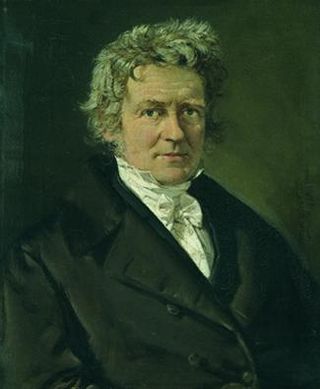
Friedrich Wilhelm Bessel was a German astronomer, mathematician, physicist, and geodesist. He was the first astronomer who determined reliable values for the distance from the sun to another star by the method of parallax. Certain important mathematical functions were named Bessel functions after Bessel's death, though they had originally been discovered by Daniel Bernoulli before being generalised by Bessel.
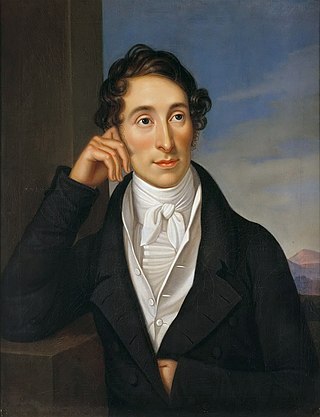
Carl Maria Friedrich Ernst von Weber was a German composer, conductor, virtuoso pianist, guitarist, and critic in the early Romantic period. Best known for his operas, he was a crucial figure in the development of German Romantische Oper.

Johann Christoph Friedrich von Schiller was a German playwright, poet, philosopher and historian. Schiller is considered by most Germans to be Germany's most important classical playwright.

Johann Adam Hiller was a German composer, conductor and writer on music, regarded as the creator of the Singspiel, an early form of German opera. In many of these operas he collaborated with the poet Christian Felix Weiße.
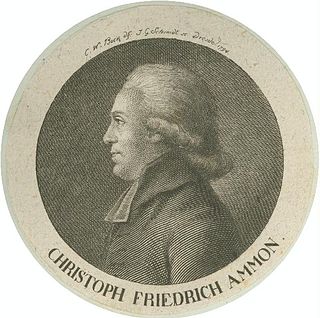
Christoph Friedrich von Ammon was a German theological writer and preacher. He was born at Bayreuth, Bavaria and died at Dresden.

Franz Gerhard von Kügelgen was a German painter, noted for his portraits and history paintings. He was a professor at the Dresden Academy of Fine Arts and a member of both the Prussian and Russian Imperial Academies of Arts. His twin brother, Karl von Kügelgen, was also a painter of note.

Carl Friedrich von Rumohr was a German art historian, writer, draughtsman and painter, agricultural historian, connoisseur of and writer about the culinary arts, art collector and patron of artists.

Ferdinand Jagemann was a German painter; known primarily for his portraits.

Georg Melchior Kraus was a German painter. He was a co-founder of the Weimar Princely Free Drawing School, together with Friedrich Justin Bertuch, in 1776.
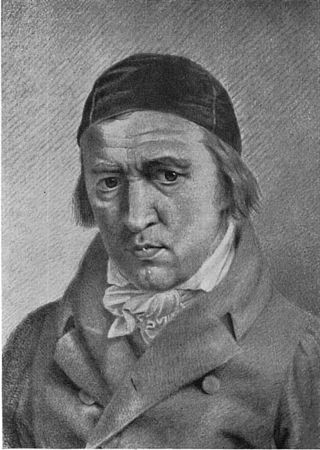
Johann Heinrich Meyer was a Swiss painter, engraver and art critic. He served as the second Director of the Weimar Princely Free Drawing School. A close associate of Johann Wolfgang von Goethe, he was often referred to as "Goethemeyer".

Adrian Zingg was a Swiss painter.

Friedrich Georg Weitsch was a German painter and etcher.

Johann Eleazar Zeissig, also known as Schenau, was a German genre, portrait and porcelain painter, and engraver; director of the Royal Academy of Arts in Dresden.
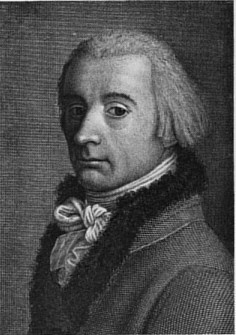
Johann Heinrich Lips was a Swiss copper engraver; mostly of portraits.
Friedrich August Carus was a German philosopher. He was the father of surgeon Ernst August Carus (1797–1854).
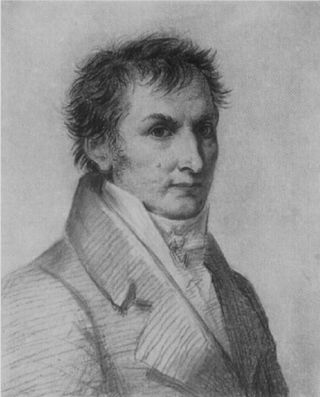
Johann Peter Langer, after 1808, von Langer was a German painter, engraver and wallpaper designer.
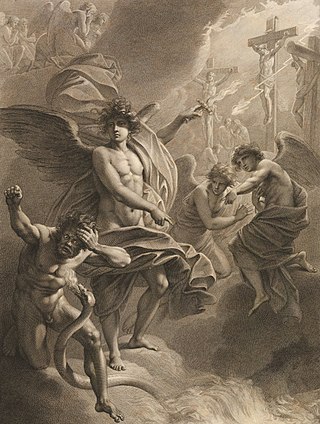
Johann Friedrich Leybold was a German miniaturist painter and copper engraver.
Christian Johann Christoph Schreiber was a German theologian, philologist, philosopher, and poet. He was also the Superintendent of the dioceses of Lengsfeld and Dermbach. He was connected in friendship or correspondence to writers and philosophers of his time, and published poetry, sermons, historical and philosophical works.

Christian Ludwig von Hagedorn was a German art historian and collector, as well as an amateur engraver. He also served as a diplomat. His elder brother, Friedrich, was a well known poet.

Heinrich Theodor Wehle, or Hendrich Božidar Wjela, in Sorbian was a German-Sorbian landscape painter and etcher.
This page is based on this
Wikipedia article Text is available under the
CC BY-SA 4.0 license; additional terms may apply.
Images, videos and audio are available under their respective licenses.

![Landeskrone Mountain [de], near Gorlitz Christoph Nathe, Landeskrone Mountain near Gorlitz, c. 1795, NGA 110801.jpg](http://upload.wikimedia.org/wikipedia/commons/thumb/6/61/Christoph_Nathe%2C_Landeskrone_Mountain_near_G%C3%B6rlitz%2C_c._1795%2C_NGA_110801.jpg/300px-Christoph_Nathe%2C_Landeskrone_Mountain_near_G%C3%B6rlitz%2C_c._1795%2C_NGA_110801.jpg)

















